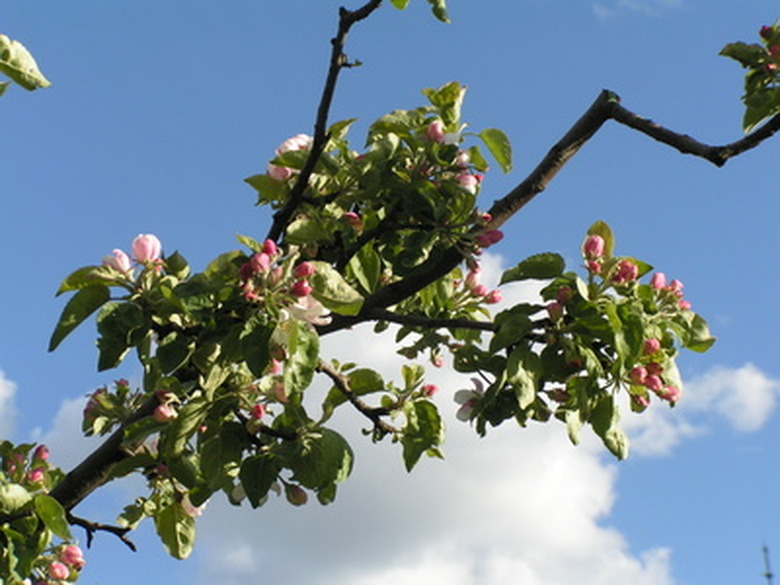How To Tell Tip-Bearing Apple Trees From Spur-Bearing Apple Trees
Most spur-bearing varieties of apples began as the mutated branches of known apple cultivars. As grafting stock, these spur types develop into trees 70 percent the size of a standard apple, but that mature growth drops even further if semidwarfing or dwarfing rootstocks form the base of the tree. All apple trees, including spur- and tip-bearing varieties, set fruit both at the tip of the terminal branches and on fruiting spurs to the sides of the terminal twig. Spur varieties grow more spurs per inch than the older tip varieties and set fruit on younger wood.
Step 1
Examine fruiting branches of each type of tree during the spring bloom. Look for dense clusters of fruiting spurs near the terminal end of the branches on spur-bearing apples. Spur-bearing apple trees bloom from side spurs in the second year of the spur's growth. Only one short section of new wood forms before that twig blooms.
- Most spur-bearing varieties of apples began as the mutated branches of known apple cultivars.
- All apple trees, including spur- and tip-bearing varieties, set fruit both at the tip of the terminal branches and on fruiting spurs to the sides of the terminal twig.
Step 2
Look for longer and more widely spaced fruiting twigs on tip-bearing apple trees. Fruiting spurs on these varieties show two sections of woody growth, with flower buds on the second section of the twig.
Step 3
Observe the bearing habits of the tree. Spur-bearing trees produce heavily one year and poorly the next unless growers intentionally thin the crop. Fruiting spurs may grow so thickly that spurs themselves must be pruned out to reduce the crop and ventilate the canopy of the tree.
Step 4
Research the variety name if known. Spur-bearing varieties developed more recently than tip-bearing varieties. Some apple types come in both spur and tip cultivars, but many spur types are unique. Increased yield and compact size make spur-bearing habits a popular and well-advertised selling point.
- Look for longer and more widely spaced fruiting twigs on tip-bearing apple trees.
- Fruiting spurs may grow so thickly that spurs themselves must be pruned out to reduce the crop and ventilate the canopy of the tree.
Step 5
Compare fruit from unknown apple trees to known types. Grafted varieties share the same genetic structure, and the apples serve as reliable identifiers, like fingerprints.
Tip
Don't assume a nursery tree is the high-yield spur-bearing type simply because it's dwarf or semidwarf stock. Both spur- and tip-bearing varieties may be grafted to either kind of dwarfing rootstock. Join horticultural societies such as North American Fruit Explorers or Seed Saver's Exchange for expert advice on heirloom apples and other unusual varieties. Fruiting spurs alternate function from year to year. On spur-bearing trees, some second-year spurs will bloom, while others grow the new wood that bears next season's crop.
Warning
Don't send samples of branches to expert growers for their hands-on opinions unless they request it. Cuttings could carry apple diseases, especially if taken from older and poorly managed trees.
